Fraxel
Fraxel
YOU, YOUNGER
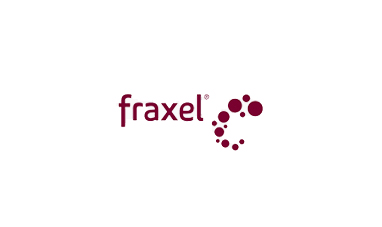 Fraxel is a non-invasive laser therapy providing a wide array of treatment options to address many forms of aging, customized to each patient's needs and concerns, many requiring minimal recovery time. It's the perfect solution for people who want their skin to look younger, but don’t want to look plastic or fake and can’t afford a lot of time away from work or their social life.
Fraxel is a non-invasive laser therapy providing a wide array of treatment options to address many forms of aging, customized to each patient's needs and concerns, many requiring minimal recovery time. It's the perfect solution for people who want their skin to look younger, but don’t want to look plastic or fake and can’t afford a lot of time away from work or their social life.
Most of us wish we could slow down the effects aging has on our looks – and maybe even get a few years back in the process. Fraxel® is proven laser technology that can help reverse the visible effects of aging, naturally helping you look as young as you feel. With Fraxel, change isn’t drastic or scary – it’s you, just younger.
Fraxel is effective on:
- Fine lines and wrinkles – like crow’s feet and brow lines
- Surface scarring – erasing effects of acne and other scarring
- Pigmentation – minimizing the appearance of age spots
- Sun damage – helping heal dangerous skin damage
- Actinic Keratosis (AK) – a common pre-cancerous skin condition
FRAXEL BY THE NUMBERS
In science and medicine, sometimes statistics can tell a bigger-picture story. Some impressive numbers:
- Fraxel is available in more than 80 countries worldwide
- Over 2,500 physicians offer Fraxel treatments
- Over 800,000 procedures have been performed
- More than 55 peer-reviewed articles have been written
- Over 45 patents have been issued on unique fractional laser technology
- Fraxel received aesthetic clearance in November 2003
THE FRAXEL DIFFERENCE
- WRINKLES
- As you age, your skin's collagen and elastin simply break down faster than your body can rebuild them. The slowed remodeling of these skin-tightening proteins causes your skin to thin, droop and lose elasticity—which often leads to winkles, furrows and fine lines.
If you have wrinkles on your face or around your eyes, you've probably had a wonderful life, rich with laughter and emotional experiences. After all, expressions like smiling, laughing, pondering and squinting naturally involve the contraction of muscles—which can lead to wrinkles, furrows and fine lines. - AGE / SUNSPOTS
- Age spots are due more to sunning than aging. These spots—also called sunspots, brown spots or liver spots—are flat, uneven dark patches on the face, neck, chest, hands and arms and other areas that are regularly exposed to the sun. Though usually harmless, these blotchy brownish patches can make you look and feel older than you really are.
In the sun, your body reacts by producing a pigment called melanin to protect your skin from ultraviolet rays. If you spend a lot of time in the sun, your skin may overreact by producing too much melanin. That increased pigmentation can result in age spots, which fall into a broad medical category called "pigmented lesions." - MELASMA
- Melasma—which is most common in women and affects about 45 million people worldwide—appears as irregular patches of brown skin on the forehead, cheeks, upper lip and nose. Like most other pigmented lesions, Melasma is not dangerous, but it can be a self-confidence crusher, prompting many women to hide behind a mask of make-up.
Melasma is most common during hormonal fluctuations associated with pregnancy, oral contraceptives or hormone replacement therapy. So instead of celebrating the beauty of motherhood, women with Melasma must wear what's often called "the mask of pregnancy. - ACTINIC KERATOSIS (AK)
- Actinic Keratosis (AK) is a common pre-cancerous skin condition that affects approximately 10 million Americans each year. AK lesions typically appear as a scaly or crusty growth in areas that are frequently exposed to sunlight. People who have fair complexions are more prone to AKs than are people with medium or dark skin.
Although Actinic Keratosis is considered a pre-cancerous condition, it is very treatable. Standard therapies include topical ointments, freezing, surgical excision and Photodynamic Therapy (PDT) . Now physicians are increasingly turning to lasers, such as Fraxel technology, to effectively treat AKs. - SKIN RESURFACING
- Over the years, your skin is exposed to sun, air pollution, stress, fatigue and lifestyle factors such as smoking. It all can affect your skin's texture, color and tightness.
To resurface your skin and correct imperfections, there are many options from chemical peels to dermabrasion. But unlike other remedies that scrape, peel and cut the surface of your skin, Fraxel laser treatment has been cleared by the FDA to safely, gently and effectively resurface your skin from the inside out. That means improved texture, more even tone and smoother skin—all with minimal risks, and without discomfort and prolonged downtime of other procedures. - ACNE / SURGICAL SCARS
- Scars are depressions or indentations in the skin that occur after a medical condition such as acne or after a surgical incision. Especially when they're on the face or other visible areas, scars can carry the stigma of adolescent acne long after the acne is gone, or they can serve as unpleasant reminders of a past surgery.
Acne scars can occur as the skin heals from pimples, whiteheads and blackheads that form when oil, bacteria and dead cells get stuck below the skin's surface. Acne scars are typically indented marks or raised, red areas that sometimes give the skin a wavy appearance. Surgical scars, meanwhile, form naturally as skin heals from an incision.
Detailed info
THE DETAILS
Fraxel is an advanced technology – but how it works shouldn’t be a mystery. Here are some details on the treatment and the science behind it. Remember, every patient’s circumstances are different, so for specifics, it’s best to talk to your Fraxel physician one-on-one.
Fraxel at Work
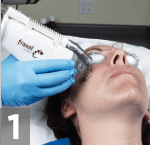
"Smart scanning" hand piece ensures consistency and safety

Fractional lasers penetrate top skin layers
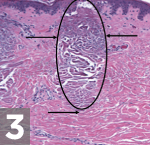
Fraxel light energy stimulates collagen, and resurfaces the top skin layer
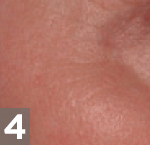
Your skin's natural rejuvenation process smoothes wrinkles and scars by stimulating collagen
Treatment Facts and Guidelines
- Duration
- Fraxel treatments usually last between 15-45 minutes
- Treatment Regimen
- Most patients see the best results with 1-5 Fraxel treatments
- Results
- Fraxel works with your body’s natural skin cells, so results typically take 1-3 weeks to take effect.
- Comfort
- Most Fraxel patients report the sensation of a "light sunburn" immediately after treatment, but treatment plans can vary, so ask your physician about the specifics of your treatment.
Safety and Side Effects
With a track record of over 800,000 treatments, Fraxel technology is proven to be safe and effective for multiple indications. But because skin types and conditions can vary, some side effects are possible.
THE MOST ADVANCED TRACK RECORD—FOR ADVANCED SKIN SCIENCE
Fraxel laser treatment removes years from the skin's appearance—without the degree of risks and side effects commonly associated with other procedures. That's because our team of scientists, physicians, clinicians and engineers are dedicated to developing safe, effective solutions for rejuvenating your skin. The Fraxel track record speaks for itself:
- Excellent safety record with more than 800,000 treatments performed
- Extensive clinical and tissue research
- Ongoing clinical trials in our state-of-the-art Solta Medical Aesthetic Center located within Solta corporate headquarters
- Ongoing testing and research by our on-site biomedical engineering team
- Safe and effective on most skin types, on and off the face, for men and women
When you get a Fraxel treatment, you can feel confident you're receiving a safe, effective procedure. Fraxel is a treatment you can trust.
Fraxel repair
Potential side effects include prolonged redness, swelling, oozing, petichiae, delayed wound healing, scarring, crusting or scabbing, infection from bacterial, viral or fungal agents, pigmentary changes, herpes reactivation and acne flare-up.
Fraxel restore DUAL 1550/1927 and Fraxel refine
Potential side effects include prolonged redness, swelling, blistering, scarring, infection, pigmentary changes (hyperpigmentation) , herpes reactivation and acne flare-up.
FAQ
How is a Fraxel treatment different from other laser skin rejuvenation procedures?
Traditionally, two kinds of laser treatment have been available for cosmetic skin treatment: ablative and non-ablative. Typical ablative treatments, which use a high temperature to vaporize unwanted tissue, can be effective—but with significant side effects and several weeks of recovery time. Non-ablative treatments, meanwhile, have very few side effects and low downtime, but they commonly require numerous treatments to produce more modest results.
Fraxel laser treatment delivers the potency of ablative treatments with the gentle safety of non-ablative lasers. So you get the best of both worlds: dramatic results and less downtime.
The Fraxel family of products has three treatments, all delivering remarkable results safely with fast recovery. The three Fraxel treatments fall into two categories:
- Non-ablative
- Fraxel re:fine® treatment—for prevention and maintenance
- Fraxel 1550 treatment—for mild to severe skin damage
- Fraxel 1927 treatment—for mild to severe skin damage
As non-ablative laser treatments, Fraxel non-ablative treatments can improve mild to moderate skin damage with little to no downtime.
- Ablative
- Fraxel re:pair® SST treatment—for the correction of moderate-severe photoaging, usually in a single treatment
Fraxel re:pair SST treatment is a revolutionary new way to address the most severe signs of skin damage—without the degree of risks, complications and prolonged downtime of other ablative laser procedures. Fraxel re:pair SST treatment uses a high-intensity carbon dioxide (CO2) laser to vaporize unwanted tissue, but thanks to pioneered fractional technology, the treatment delivers dramatic results with significantly faster recovery time than non-fractional treatments—all in 1-2 treatments.
What is a Fraxel laser treatment?
Fraxel is a revolutionary laser treatment that helps you to remove years from your appearance. Fraxel is the pioneer of "fractional photothermolysis", a technology in which thousands of microscopic laser columns - each just one-tenth the diameter of a hair follicle - treat a fraction of the skin at a time without affecting the surrounding tissue. These laser columns stimulate the production of younger, smoother, healthier skin to replace damaged tissue.
How is a Fraxel re:pair SST treatment different from a Fraxel DUAL 1550/1927 treatment?
Both Fraxel re:pair SST treatment and Fraxel DUAL 1550/1927 treatment use fractional technology, but in different ways. As an ablative procedure, Fraxel re:pair SST treatment uses a carbon dioxide (CO2) laser to vaporize microscopic columns of tissue deep within the skin. Fraxel re:pair SST treatment is a more aggressive procedure and is used to treat the most severe signs of skin damage. Results are achieved in 1-2 treatments and wound care recovery time (usually 24-72 hours) is generally longer than other Fraxel treatments. Fraxel DUAL 1550/1927 treatment, on the other hand, is a non-ablative technique that intensively treats older skin cells while leaving the skin’s protective barrier intact. This results in less downtime and need for post-treatment wound care.
How long do the positive effects of Fraxel re:pair SST treatment last?
The results of Fraxel re:pair SST treatment are both immediate and progressive. Soon after the treatment, the surface of your skin will feel softer, look brighter and show more even tone. The next 3 to 6 months will bring more improvement as the deeper layers of the skin continue to heal.
What side effects should I expect after a Fraxel re:pair SST treatment and what are the risks?
Depending on the aggressiveness of your treatment, there might be some pinpoint bleeding following the procedure, as well as some oozing for up to 48 hours until the wounds close. The most common side effects are edema (swelling), which usually subsides after a week, and erythema (redness), which may last up to a month, depending on the aggressiveness of treatment. Other temporary side effects may include minor itching, dry skin, peeling or flaking, oozing and crusting. As with all ablative laser procedures, there is an elevated risk of delayed wound healing, infection, pigmentary changes (hyperpigmentation) and/or scarring. Please see our Commitment to Safety statement for a list of potential side effects and complications.
How is Fraxel re:pair SST treatment performed and does the treatment hurt?
First, your skin will be cleansed. Then, 60 to 90 minutes prior to treatment, a topical numbing agent will be applied to the treatment area. Your physician may also choose to give you another medication, such as Ativan, to relax you. Most patients describe an increased sensation of heat during the treatment, and there may be some discomfort. However, unlike the experience in traditional CO2 treatments, you will feel quite comfortable immediately after a Fraxel re:pair SST treatment. The procedure takes approximately 20-30 minutes for a full face.
What are the benefits of Fraxel re:pair SST treatment?
- Significant results in a single treatment
- Smoother, more even skin tone and texture
- Softening of deep frown lines and wrinkles
- Improved appearance of redness caused by sun damage
How does a Fraxel DUAL 1550/1927 treatment work?
Fraxel DUAL 1550/1927 laser treatment targets aging and sun-damaged skin with microscopic laser columns that penetrate deep into your skin to expedite your body’s remodeling of collagen. And since the laser treats only a fraction of tissue at a time, it leaves the surrounding tissue intact, which promotes very rapid healing. Fraxel DUAL 1550/1927 treatment resurfaces your skin by stimulating the growth of new, healthy skin cells from the inside out.
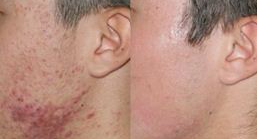
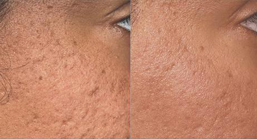
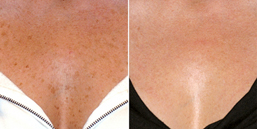

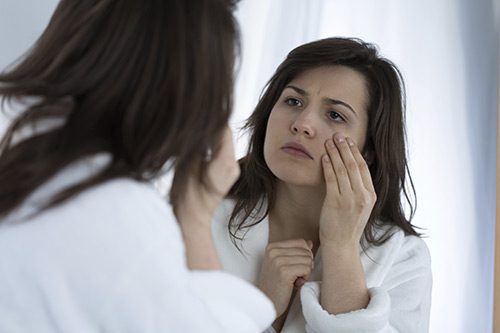
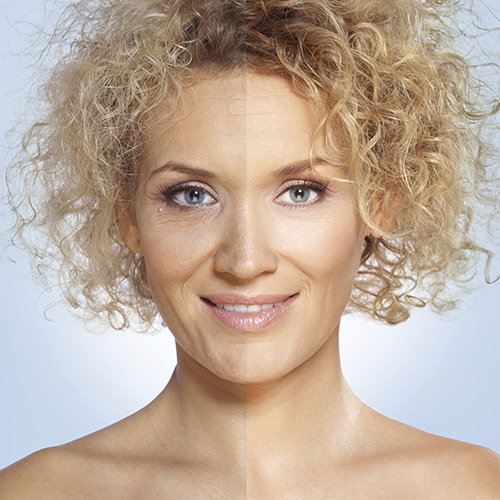
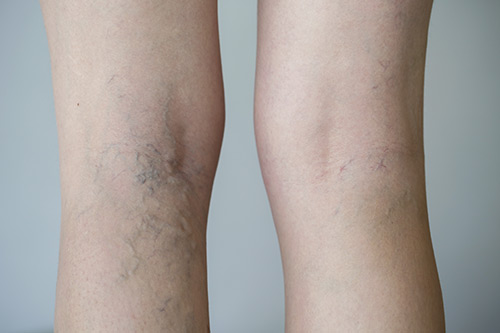
 After a Sclerotherapy procedure or Laser Vein Treatment, patients can resume normal daily activities and walking is encouraged to prevent blood clots. You will wear support to compress the treated vessels for one week after treatment to keep blood blow out of the treated veins.
After a Sclerotherapy procedure or Laser Vein Treatment, patients can resume normal daily activities and walking is encouraged to prevent blood clots. You will wear support to compress the treated vessels for one week after treatment to keep blood blow out of the treated veins.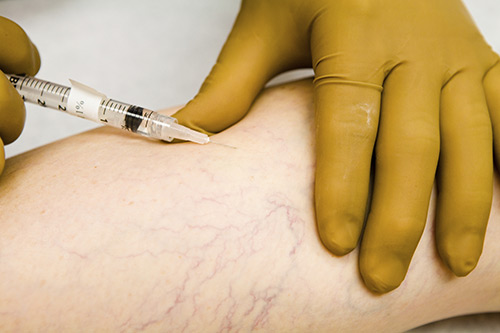 During this procedure, the affected leg is elevated to drain blood, and the sclerosant is injected into the varicose vein. The procedure is done in a doctor's office or clinic and takes 5 to 30 minutes, depending on how many varicose veins are treated and how big they are.
During this procedure, the affected leg is elevated to drain blood, and the sclerosant is injected into the varicose vein. The procedure is done in a doctor's office or clinic and takes 5 to 30 minutes, depending on how many varicose veins are treated and how big they are. based on
based on 